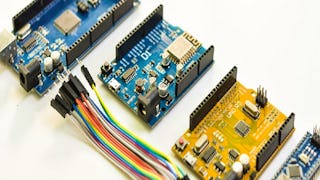This course can also be taken for academic credit as ECEA 5346, part of CU Boulder’s Master of Science in Electrical Engineering degree.
UX and Interface Design for Embedded Systems is the first of three classes in the Embedded Interface Design (EID) specialization, an online version of the on-campus EID class taught in graduate embedded systems design. This first course is focused on user experience (UX) and the related methods, practices, and principles that will help ensure your embedded interface designs for devices and systems are what your users both need and want. The class includes an introduction to UX, and then a four phase breakdown of a typical UX design process, including planning, user research, design methods, and testing for verification and validation. Much of the content provides generally applicable UX techniques, but particular focus is included for considerations in developing embedded devices. The class includes practical projects that let you try some of the key methods in a thorough interface design process.
















